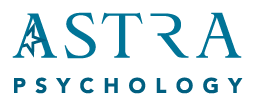Anxiety

Fear is a normal and natural human emotion in response to real or perceived threat.
Feeling anxious is also a normal reaction to threat, but it is also about anticipating a future threat. When we feel anxious, we may believe a future threat is likely to happen. However, sometimes the future threat is not likely to happen at all, but we still feel anxious.
When we perceive danger, our bodies automatically release a host of hormones or neurochemicals that get the body ready to attack (fight), run away (flight) or freeze. When we feel fear the mind and body get ready to deal with it. The mind considers worst-case scenarios whilst the body increases breathing to increase oxygen uptake, the heart beats faster to get oxygen to key muscles, sweat glands become active to cool the body and blood is diverted away from the skin.
Therefore, the anxiety response is a normal and largely unconscious process that only becomes a problem when it is exaggerated, prolonged or occurs in the absence of real threat. People with anxiety disorders typically overestimate the danger in situations they fear or avoid. They may have what is called an “anxiety disorder” when they do things or avoid things to the point where it affects the way that they live.
We are anxious when we …….
We may have an anxiety disorder when we……
Anxiety Disorders
Anxiety disorders differ from one another in the types of objects or situations that cause fear, anxiety or avoidance behaviours, and the associated thinking patterns.
Separation anxiety disorder:
A person with separation anxiety disorder is fearful or anxious about separation from attachment figures to a degree that is developmentally inappropriate. There is persistent fear or anxiety about harm coming to attachment figures and events that could lead to loss or separation from attachment figures and reluctance to go away from attachment figures as well as nightmares and physical symptoms of distress. Although the symptoms usually develop in childhood they can be expressed in adulthood as well.
Selective mutism:
This is characterised by a persistent inability to speak in social situations in which there is an expectation to speak (e.g., school) even though the person speaks in other situations The failure to speak has significant impacts on achievement in school or work settings or otherwise gets in the way of normal social communication.
Specific phobia:
A phobia is a significant fear or anxiety about a specific object or situation (e.g., flying, heights, animals, receiving an injection, seeing blood). The phobic object or situation almost always produces immediate fear or anxiety and is actively avoided or endured with intense fear or anxiety.
Social anxiety disorder:
Marked fear or anxiety about one or more social situations in which the individual is exposed to possible scrutiny by others. Examples include social situations (e.g., having a conversation, meeting new people), being observed (e.g., eating and drinking), performing in front of others (e.g., giving a speech). The person fears that they will act in a way or show anxiety symptoms that will be negatively evaluated (e.g., will be humiliating or embarrassing, will lead to rejection or offend others). The fear or anxiety is out of proportion to the actual threat posed by the situation and active avoidance behaviours become prominent.
Panic disorder:
This disorder consists of recurrent or unexpected panic attacks. A panic attack is an abrupt surge of intense fear that reaches a peak within minutes and usually contains a set of intense symptoms. The person usually becomes concerned about suffering future panic attacks and their consequences (e.g., losing control, going crazy, having a heart attack) and begins behaviours such as avoidance of exercise or unfamiliar places to avoid future attacks.
Agoraphobia:
Marked fear or anxiety of two or more of the following situations: using public transportation (e.g., cars, buses, trains, ships, planes), being in open spaces (e.g., parking lots, marketplaces, bridges), being in enclosed spaces (e.g., shops, theatres, cinemas), standing in line or being in a crowd, being outside of the home alone. The individual fears or avoids these situations because of thoughts that escape might be difficult or help might not be available in the event of developing panic-like symptoms.
Generalised anxiety disorder:
This involves persistent and excessive worry that interferes with daily activities. The ongoing worry and tension may be accompanied by physical symptoms such as restlessness, feeling on edge or easily fatigued, difficulty concentrating, muscle tension or problems sleeping. Often the worries focus on everyday things such as job responsibilities, family health or minor matters such as chores, car repairs or appointments.
Who Experiences Anxiety?
Anxiety disorders are the most common form of mental disorder and can affect anyone at any age. Studies indicate that women are more likely than men to be diagnosed with an anxiety disorder. On average one in three women and one in five men experience anxiety at some stage of their life and in a 12-month period over two million Australians will experience anxiety.
Anxiety and depression often occur together. Anxiety can be a symptom of major depression or depression way worsen in response to an anxiety disorder.
What Causes Anxiety?
Anxiety disorders can run in the family and be inherited via genetics. Some research suggests that brain chemistry such as faulty circuits in the brain that control fear and emotions may be involved. Environmental stress such as childhood abuse and neglect, death of a loved one or being attacked and seeing violence may be linked to anxiety disorders. Drug withdrawal or misuse can lead to anxiety. Medical conditions such as heart, lung or thyroid conditions can cause similar symptoms to anxiety or make anxiety worse.
Anxiety Treatments
The first step is to see a doctor to make sure there is no physical problem causing symptoms. Effective treatment helps individuals learn how to control anxiety and will depend on the type of anxiety they are experiencing. For mild symptoms a health professional may suggest lifestyle changes such as regular exercise and reducing stress levels. They may also suggest online e-therapies many of which are free, anonymous and easily accessible. When symptoms of anxiety are moderate to severe, psychological or medical treatments are more likely to be effective.
Anxiety Medications:
Several types of drugs are used to treat anxiety disorders. These will be prescribed by a medical practitioner, if they are necessary; psychologists are not able to prescribe medications. It is critical for people to check their responses to medication and to report any unusual or different behaviours or reactions to their doctors. People must have an honest and open dialogue with their doctor when trialling medications for anxiety. The effects are highly individual and side effects may develop over time.
CBT
CBT therapists, including most psychologists, aim to determine and treat maintaining factors of disproportionate fear or anxiety. These include (but are not limited to) safety-seeking behaviours, focus of attention, spontaneous imagery, emotional reasoning, memory processes and interpretation of reactions to a threat. Generally, anxiety can be understood as when a trigger taps into a fear, the person reacts in a self-protective way (usually through avoidance), fear is unchallenged and remains intact and the individual is primed to be triggered in the future.
CBT therapists have a collection of cognitive, behavioural and physical strategies that they can suggest to a client. Physical strategies such as relaxation are particularly useful when the physical symptoms of anxiety impair performance or when physical discomfort is actively avoided. Behavioural techniques tackle avoidance and can be used in self-monitoring and planning as with activity scheduling. The cognitive approaches are relevant for helping clients stand back from their problems and identifying maintaining factors and re-evaluating thinking patterns to develop balanced ways of thinking.
General Tips for Reducing Anxiety
- Learn about the disorder. The more that is understood about triggers and symptoms of anxiety, the more able people are to tackle maintaining processes. Knowledge is power and gives back a sense of control.
- Stick to a treatment plan. Stopping or varying the dosage of medications can cause unpleasant side effects and make anxiety worse. Not following through with behavioural tasks in therapy can reinforce feelings of fear and anxiety.
- Cut down on foods and drinks containing caffeine. Coffee, tea, cola, energy drinks and chocolate contain this mood-altering drug and may make symptoms of anxiety worse.
- Don’t use alcohol or recreational street drugs as these substances increase your risk of anxiety.
- Exercise. Brisk aerobic exercises like jogging and bike riding help release brain chemicals that cut stress and improve mood.
- Learn to relax. Stress management is an important part of anxiety disorder treatment. Things like meditation or mindfulness can help you unwind after a stressful day and may make treatment work better.
- Journaling is a powerful tool against anxiety. Externalising your thoughts can help you detach from the fear associated with them. Organising thoughts can also help reduce anxious apprehension.
- Socialise. Social connections help people thrive and stay healthy. People who have a close group of friends that support and chat with them have lower levels of social anxiety.
